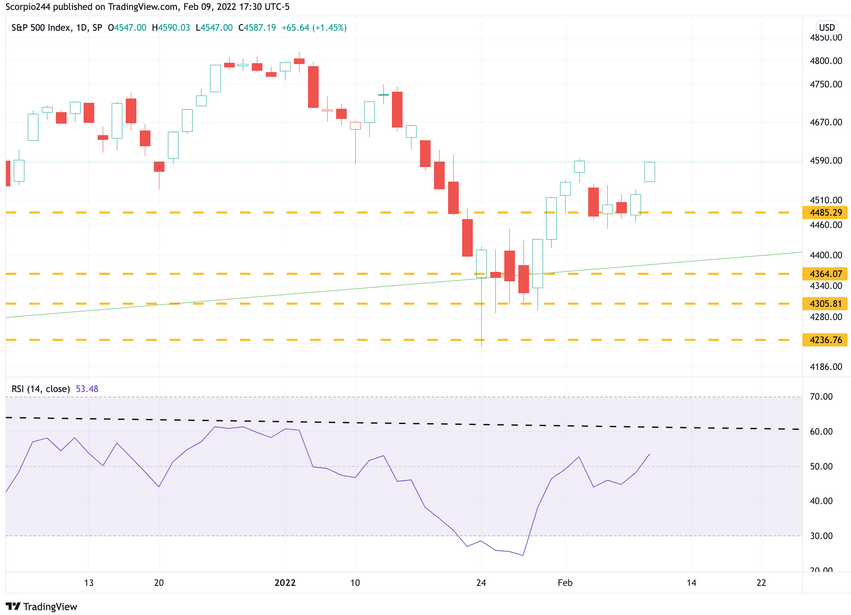Stocks rallied Wednesday, but based on all the data I saw, puts were being bought, and calls sold on the SPDR® S&P 500 (SPY) and Invesco QQQ Trust (NASDAQ:QQQ) ETFs, which wasn't bullish.
Additionally, the 2-year Treasury surged to a new cycle high by the close, while the dollar dropped. Even real rates on the 5-Yr TIP ended up surging higher into the day’s end despite being lower all day.
So, if the stock market was expecting a miss on CPI, then it was out there alone because not one other part of the market was looking for a miss, and the stock market would be the last indicator I would use to guide me on economic data.
If a miss were being priced, yields on the short end of the curve would be falling, and options traders would have been buying calls and selling puts to get ahead of a market pop.
Let’s go back to the PCE report about a week ago, on Jan. 28, to see if I can explain the potential outcome on Thursday. If you remember, the PCE data came in just a bit hotter on PCE y/y and inline m/m. As a result, real rates dropped like a rock, and the NASDAQ ripped higher. Meanwhile, breakeven inflation rates rose by three bps to 2.78% from 2.75%. The slightly higher PCE number appeared to send inflation expectations higher.
So a hotter than expected CPI reading could have a similar effect, and where stocks go will depend on where breakeven inflation expectations go after the number comes out. A number that sends inflation expectations sideways or down will likely be awful for stocks. A number that sends expectations up probably helps stocks.
But because inflation expectations result from the difference between nominal and real rates, there is any number of combinations that could send inflation expectations up or down. On top of that, it is another complexity upon itself to guess how the market will respond.
Suppose the number is hotter and the market prices in more rate hikes, that could lift rates across the entire complex. If the number is cooler, inflation expectations come down, and real yields rise, the stock market could decrease. So the best thing to do is wait for the numbers and see how the bond market responds.
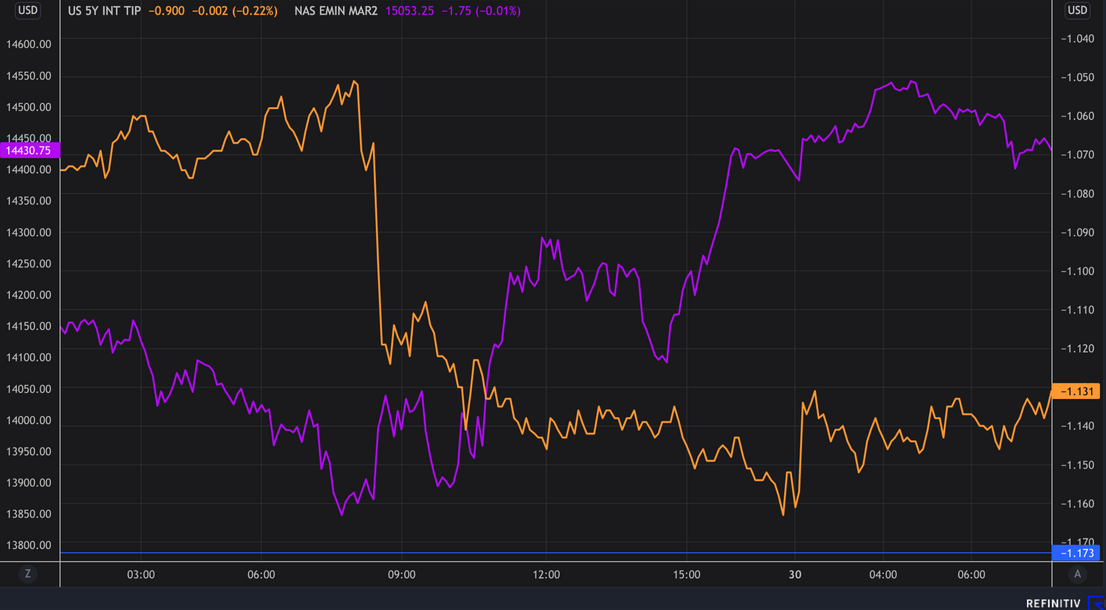
But ultimately, and sorry, not to confuse, unchanged and falling inflation expectations should indicate that real rates are rising relative to nominal rates, and I think that matters most. If you dare, you can use a ratio of the TIP to IEF to try to help you. A rising ratio indicates rising inflation expectation and vice versa.
Based on technical analysis, the 5-yr breakeven rate is very close to breaking a significant level of support. Given how much more 5-Yr TIPS are likely to rise, I think that inflation expectations should be heading much lower. If not Thursday, then very soon.
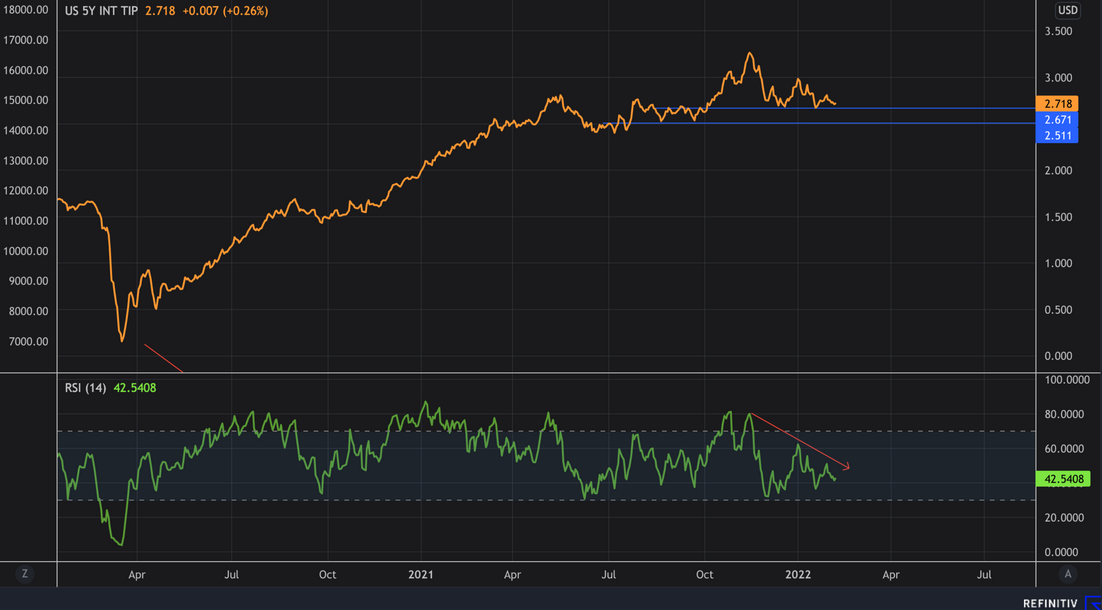
We care about breakeven inflation rates because they tell us a lot about where the equity market is likely to go. So do not automatically assume that a miss on the CPI is good for stocks.
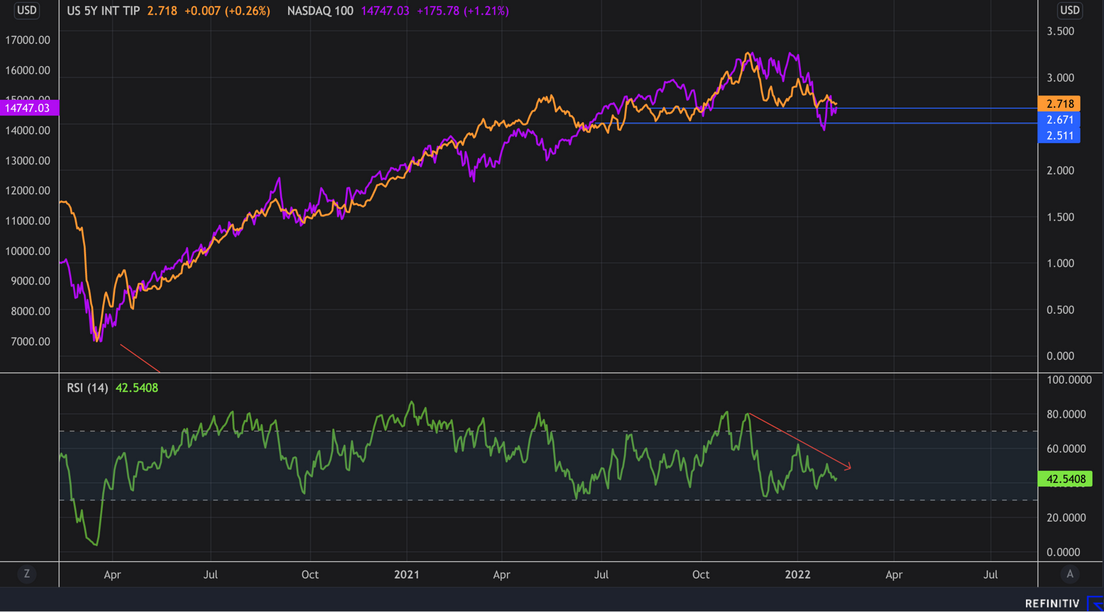
S&P 500
So a couple of interesting things today on the S&P 500. First, the index managed to fill the Facebook (NASDAQ:FB) gap, and that was where it stopped. That was the critical resistance for now.
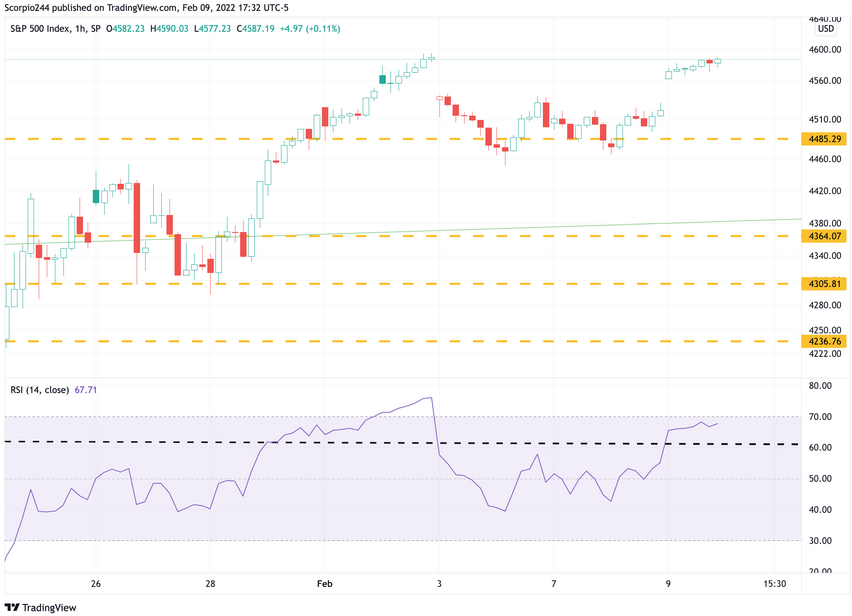
Additionally, there is a potential reversal pattern, with a double top forming and an island reversal. So a gap fill, island reversal, and possible double top pattern all on the same day.
Plus, rising yields and negative options flow may not bode well for Thursday. To confirm the double top pattern, we need the index to drop below 4,485. Any move over 4,600 will kill the double top and send me back to the drawing board.
